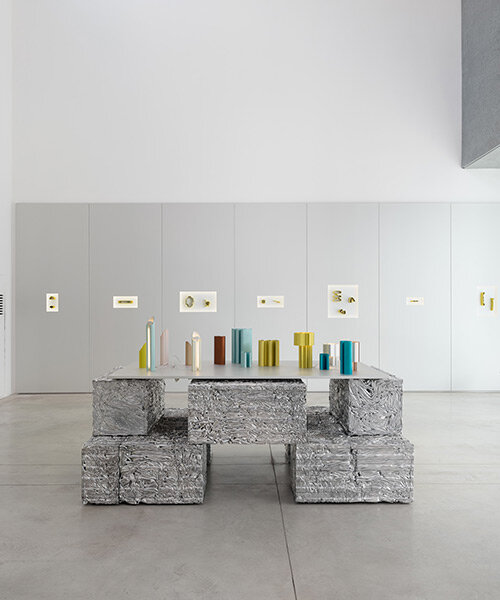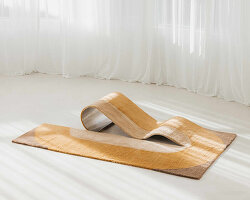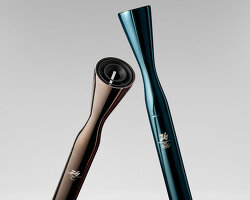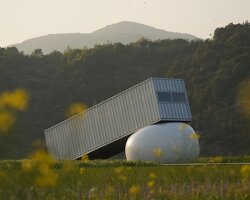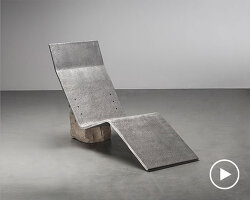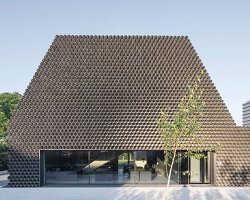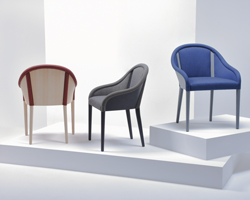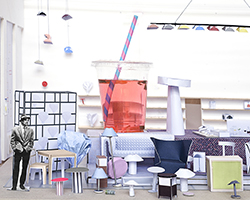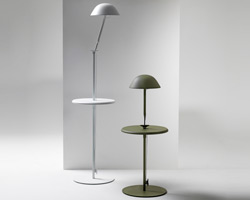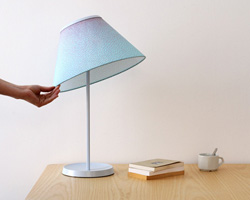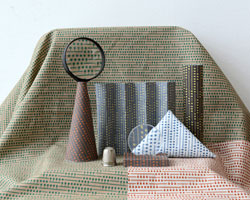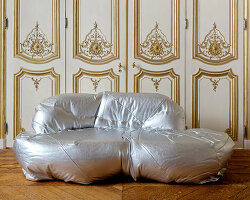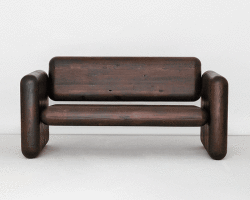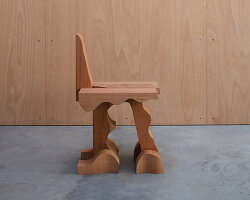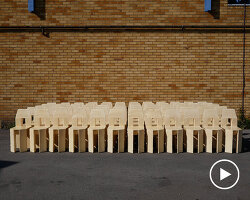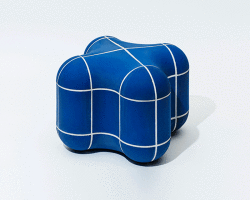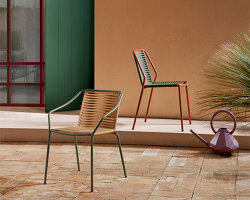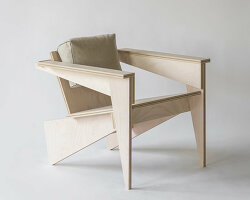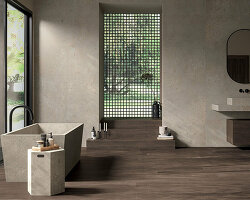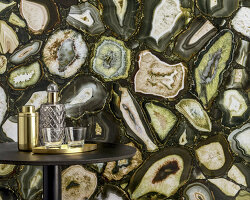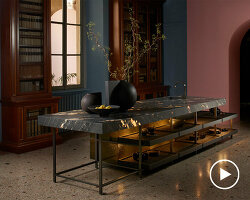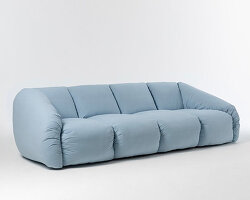HYDRO PRESENTS 100R EXHIBITION AT MILAN DESIGN WEEK 2024
Especially for Milan Design Week 2024, Hydro, a leading Norwegian aluminum and renewable energy company, unveiled the 100R exhibition at Spazio Maiocchi, highlighting the revolutionary potential of Hydro CIRCAL 100R – the world’s first industrial-scale aluminum product crafted entirely from post-consumer scrap. designboom had the chance to interview the brain behind the much-anticipated display, Lars Beller Fjetland. Under his art direction, the Norwegian designer brought together a team of seven acclaimed designers, where each was tasked with creating objects exclusively from the brand’s innovative recycled material. With names like Inga Sempé, Max Lamb, and Philippe Malouin on board, the exhibition delivered a diverse array of designs that underscored the versatility and potential of Hydro CIRCAL 100R.
‘With Hydro CIRCAL 100R, we aim at igniting an interest among designers, makers, and engineers to consider aluminum as a viable alternative to less sustainable materials. Our primary goal is to introduce this new alloy, made entirely from post-consumer scrap, and showcasing that sustainability doesn’t entail compromising quality. This new alloy made entirely from post-consumer scrap is not in any way, shape or form an inferior material, and I can’t think of a better way of illustrating this fact than actually using it to create beautifully designed products in collaboration with some of the biggest design talents in the industry,’ begins Lars Beller Fjetland.
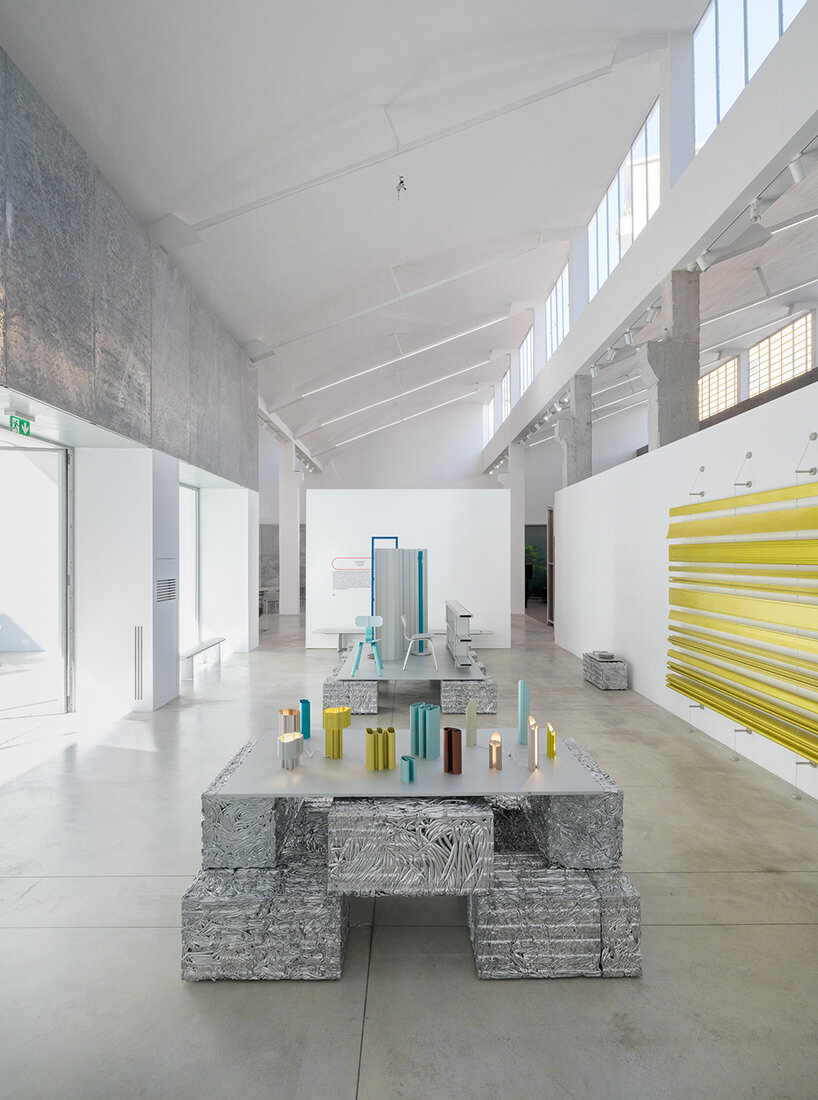
at Milan Design Week 2024, Hydro presented the ground-breaking exhibition 100R | image © EinarAslaksen
all images courtesy of Hydro
Hydro is fully committed to leading the way to a more sustainable metal industry, and the new Hydro CIRCAL 100R recycled aluminum product boasts a record-low carbon footprint of below 0.5 kg CO2e per kg aluminum. Visitors to the 100R exhibition at Milan Design Week got to witness how aluminum scrap can be turned into pristine-looking design objects – ready for mass production – while paving the way for the green transition. The Norwegian company aims to use this project to challenge the perception of the industrial material and move the needle, inspiring more designers and brands to consider this highly sustainable material.
‘Aluminum has always intrigued me. Initially, it seemed somewhat inaccessible as a material. When dealing with extrusions, you really need to work with a company like Hydro to get going, but a lot of the prototyping can be done by using a conventional 3d printer. While working on the Bello project I became aware of the huge untapped potential of extruded profiles. We have barely scratched the surface of what’s possible in terms of unconventional forms, function, texture,’ he adds.
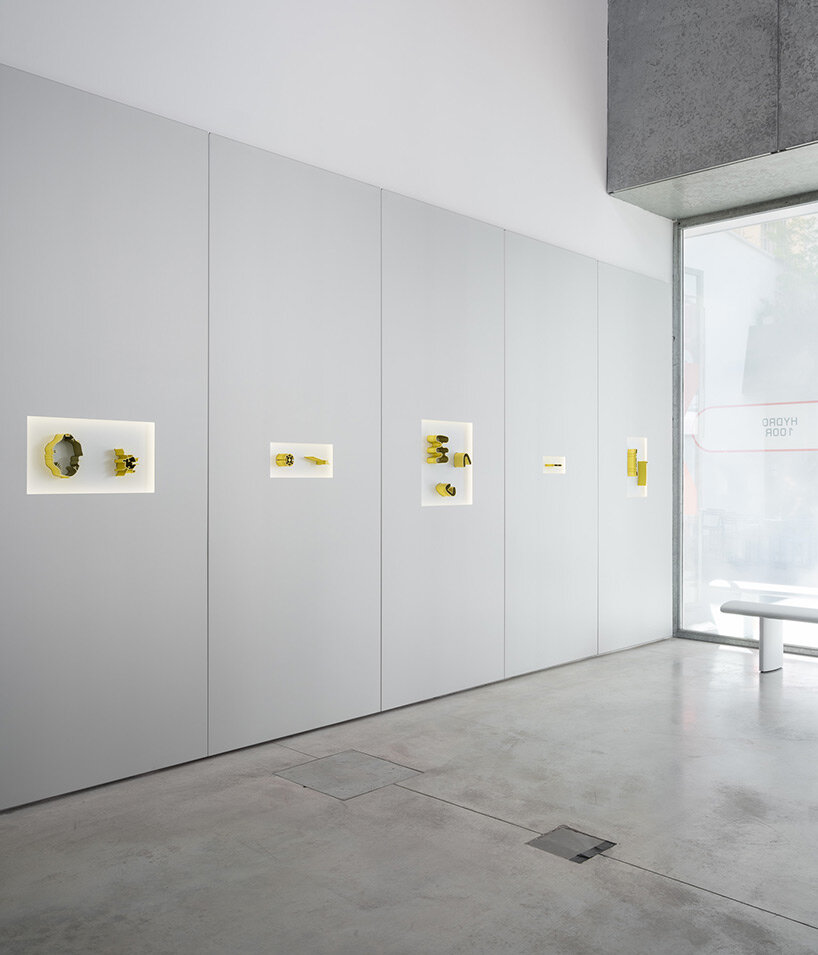
the exhibition celebrated Hydro CIRCAL 100R, the world’s first industrial-scale aluminum product made entirely of post-consumer scrap | image © EinarAslaksen
7 top designers showcase objects made from Hydro CIRCAL 100R
Lars Beller Fjetland was in charge of art direction, concept development and strategy for the 100R exhibition. The designer enlisted Inga Sempé, Max Lamb, Andreas Engesvik, Shane Schneck, Rachel Griffin, John Tree and Philippe Malouin, to create objects made entirely from Hydro’s new recycled aluminum product. His strategy was to structure a strong and clear framework and then offer each of the seven creatives complete freedom to go wild within these predefined parameters.
‘They (designers) went nuts! They all managed to find their own unique way of challenging the perception of what an extruded profile can be, which I find extremely fascinating. It’s exactly what you hope for when curating a show. The 100R exhibition space fills me with immense pride and joy, as it truly represents a culmination and celebration of design, material and innovation. Our goal was to create objects that had the potential of becoming commercial products. When you put this much time and energy into something they should be more than just pretty things for a single show, so we really tried to develop all the projects to the brink of completion. They are all turn key products ready for the market, which makes me really proud. Our lead engineer did an amazing job in a record amount of time. Working with extrusions is fast. All the product development on all the 7 products was done in 3 months with a subsequent 3 months of production. It’s really unthinkable for anyone who’s been dealing with R&D,’ continues Lars.
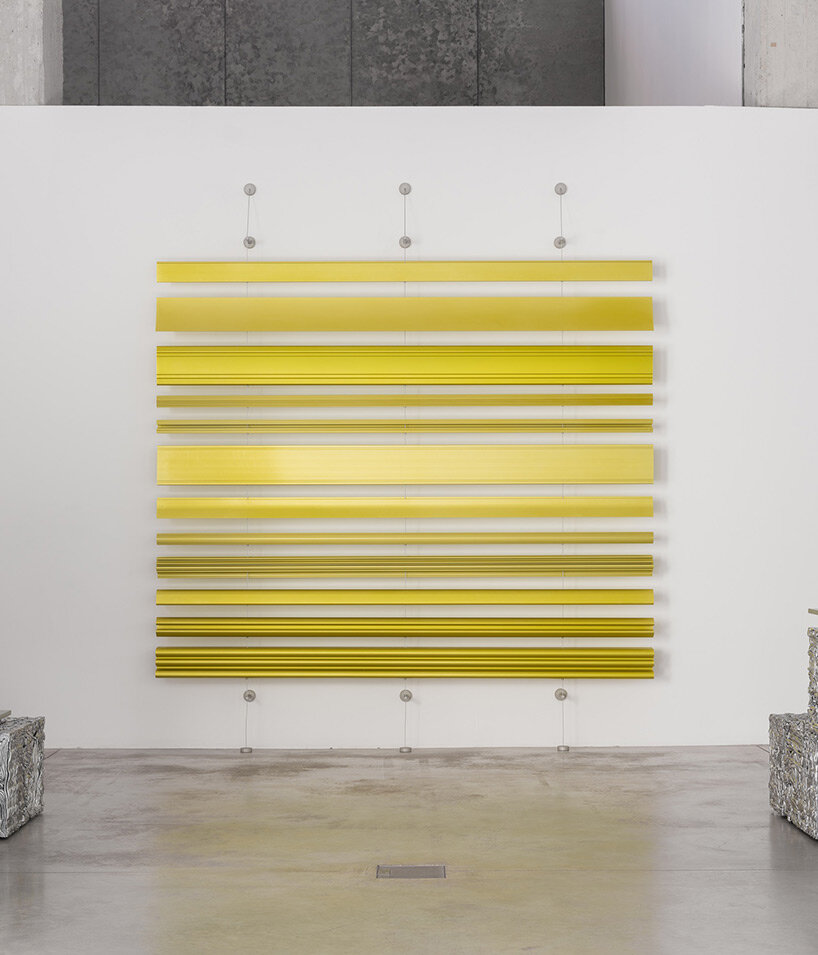
to showcase the material’s vast possibilities, Hydro has gathered a team of seven renowned designers to create objects from this revolutionary aluminum | image © EinarAslaksen
from post-consumer aluminum scrap to pristine design objects
Born in Paris, Inga Sempé introduced a collection of table lamps crafted with a strict and efficient industrial and assembly process. Using two profiles, one sliding into the other, Sempé ensures the light sources were shielded while maintaining a sleek appearance. The outer profile holds the inner part in place and displays two open sides, like vertical corridors also meant to nest LED lights. The resulting lamps exude an aesthetic reminiscent of prehistoric artefacts or mystical creatures, evoking a sense of intrigue.
‘Inga, for instance, really took it to heart and embraced the challenge, pushing the boundaries of what’s achievable in terms of tolerances and intricate geometries. The resulting product is a testament to innovation and beauty, unlike anything I have seen before,’ exclaims Lars about Inga Sempé’s table lamps.
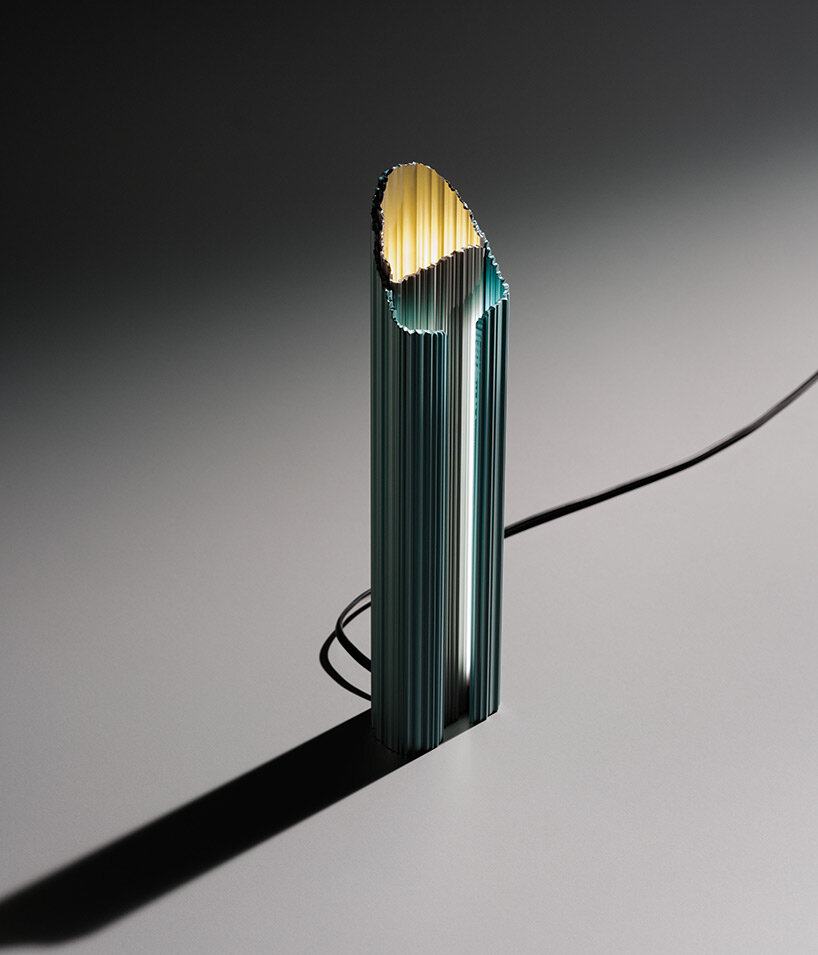
Inga Sempé’s Grotte lamp | image © EinarAslaksen
Max Lamb, UK-based acclaimed designer, presented the Prøve Light, a table lamp that serves as both an illuminating fixture and a tribute to the aluminum extrusion process. The product is composed of two separate aluminum profiles which connect by a friction ball and socket joint. The designer’s love for detail came into many forms to decorate the profiles, including a drilling guide, T-slot for nut or bolt head, ribbed texture for grip, ball and socket joints, a spring, heat sink, a musical instrument, reflector, and a subtle surface decoration. The Prøve Light stands as a testament to the possibilities unlocked through innovative manufacturing techniques.
‘Max Lamb’s approach to the extrusion challenge is nothing short of brilliant – it’s fantastic! It’s almost like he invented a new formal language. Max really understood how with extrusions you get a lot of forms for free, so he really went for it and created an object that bridges between art and design,’ says Lars.
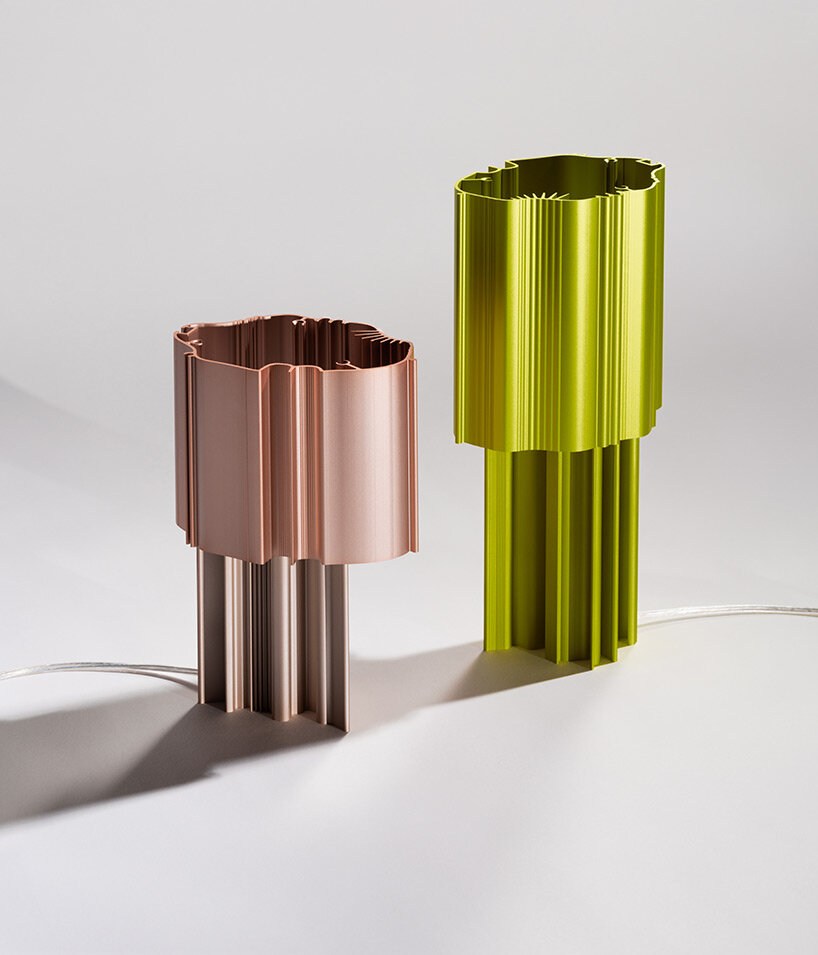
Max Lamb’s Prøve Light | image © EinarAslaksen
Andreas Engesvik, one of Norway’s most prominent designers unveiled Tsuba: a coat stand crafted entirely from Hydro CIRCAL 100R aluminum. Inspired by nature, Engesvik exudes an organic charm, with adjustable hangers and sculptural elements that redefine traditional coat stand design. His creation embodies the malleability and versatility of aluminum, showcasing its potential beyond industrial applications. The ribs and the profile itself in the ‘stem’ have a free- shaped/hand-drawn exterior that creates a vertical structure with a depth and relief in the ribs themselves that treat and reflect light differently.
‘When you’re a designer, you really need to reconfigure your brain to think differently about form, because form is usually associated with ‘costs’ – but not when you do extrusions. Andreas took full advantage of this when designing the organic, trunk-like structure that forms the stem of his coat stand. It has a rich and tactile surface while also quite brilliantly and seamlessly harboring the channel that holds the height adjustable hooks. Its built in function he describes.
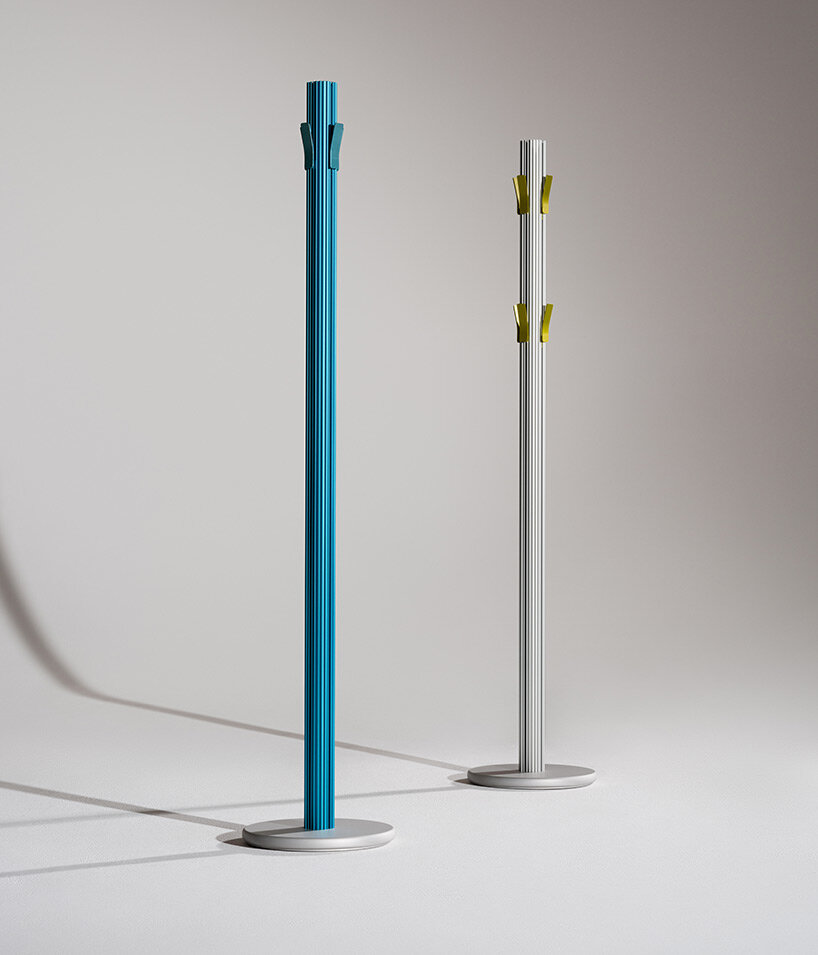
Andreas Engesvik’s Tsuba coat stand | image © EinarAslaksen
Nave, Italian for vessel to mean ‘a hollow container,’ is Shane Schneck’s design. The series of vessels, in different colors, blur the lines between precision engineering and human craftsmanship resulting in objects that defy conventional use and purpose. To develop the intricate details, the Sweden-based American designer began by investigating the nexus between analog and digital – taking the first-hand sketches into software and drawing over them. The process allowed the creator and his studio to inspect the malleability of the material.
‘Shane managed in an unexpected manner to delicately merge the human touch with this highly industrialized process. The swerving profile that changes thicknesses serves as a testament to how playful and daring one can be when working with extruded aluminum. It goes to show that the perceived formal language associated with the material and the process can and should be challenged. We shouldn’t limit ourselves to what we believe that engineers expect from us, but rather bring them along on a journey that is more exploratory and playful. This is how we innovate,’ explains Lars.
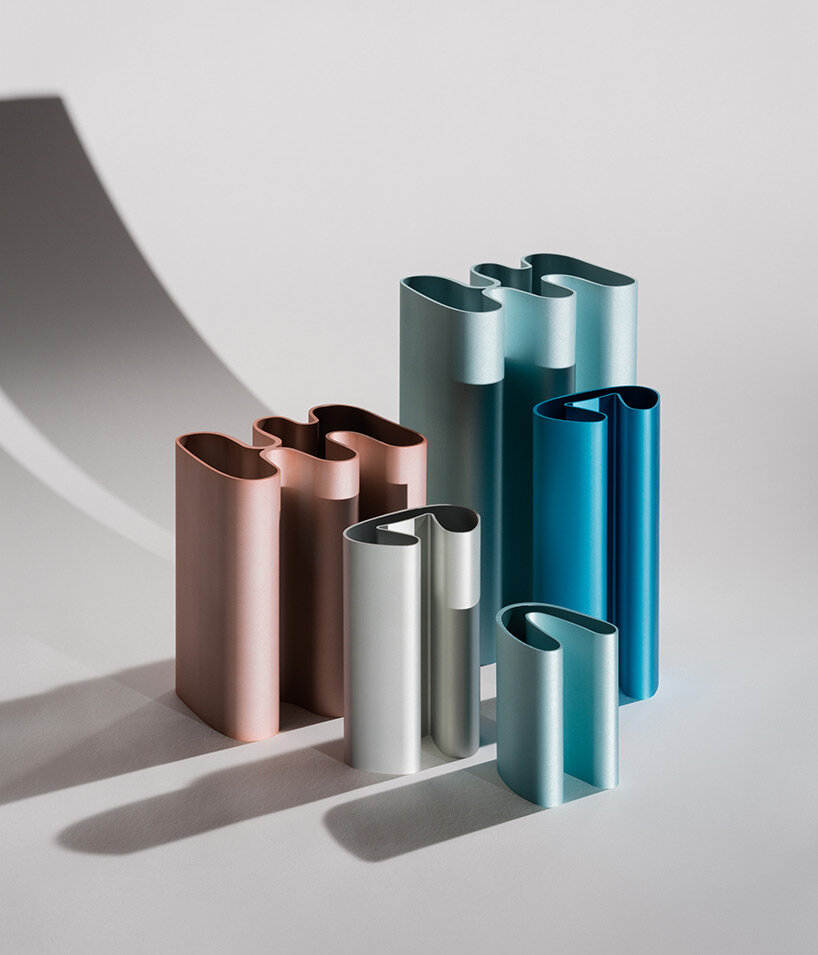
Shane Schneck’s Nave vessels | image © EinarAslaksen
Rachel Griffin, of the Earnest Studio in the Netherlands, introduced the Serial partition, a modular system crafted from interlocking aluminum extrusions. With integrated hinges and versatile configurations, Serial offers flexibility and adaptability for various spatial requirements. Griffin’s collaboration with Hydro engineers underscores the integration of design and functionality, allowing the partition system to be arranged into organic forms. As profiles are extruded in long lengths and then trimmed to size, the process can also efficiently deliver partitions of different heights.
‘Rachel Griffin’s innovative use of profile repetition to create screens and expansive landscapes epitomizes this fusion of artistry and functionality, where the Serial’s profiles literally slide into each other to expand and transform into customized screen patterns. With this project we are bridge into architecture and interior design. Imagine the possibilities of play with both height and color variations,’ he says.
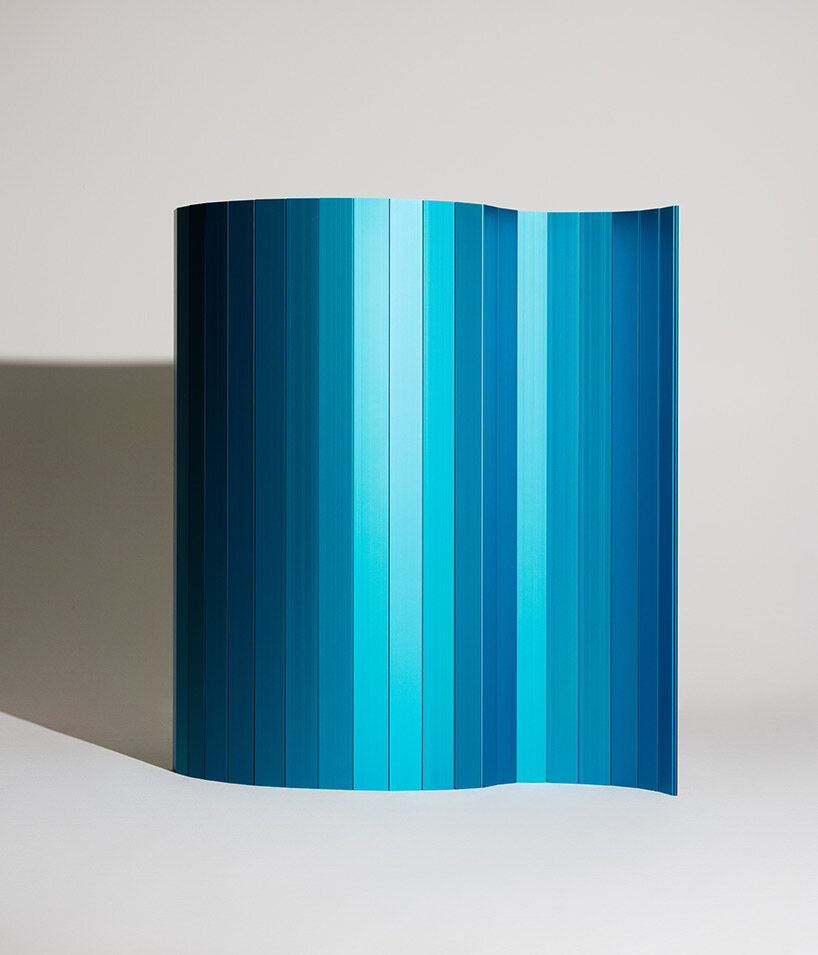
Rachel Griffin’s Serial partition | image © EinarAslaksen
John Tree on the other hand challenges the limits of aluminum extrusion with a minimalist chair design. Utilizing CNC cuts and special assembly techniques, the English designer transforms aluminum profiles into a functional seating solution. Billet Chair’s simple aesthetic is a result of Tree’s and Hydro’s expertise. Hydro provided designers with a 200mm press and dies to experiment with Hydro CIRCAL 100R. Despite its small size, the designer saw it as a challenge to create a chair using this equipment. He ingeniously used one profile to form both the chair’s legs and backbone, separating them with precise CNC cuts. Another profile, mirrored, formed the seat and backrest. This clever design epitomizes Hydro’s commitment to pushing the boundaries of sustainable manufacturing while delivering exceptional design.
‘John Tree’s chair stands as the pinnacle of mono-material thinking and is probably the most complex and challenging product we developed for the 100R exhibition. The entire chair frame is extruded out of a single profile, showcasing the full potential of how to make the most out of an extruded profile. The seat snaps into the frame structure, eliminating the need for any screws or fasteners. The chair can in its entirety be thrown into to the smelter without removing as much as a sticker,’ remarks the curator and director.

John Tree’s Billet Chair | image © EinarAslaksen
Last but not least, Philippe Malouin presented T-Board, a versatile shelving system designed for simplicity and adaptability. T-Board system utilizes a single extruded aluminum profile for both legs and surfaces, offering versatility in design. These profiles can undergo anodization in various colors and can extend up to six meters, ensuring adaptability to any space, indoor or out. To extend the product’s compatibility, the British-Canadian designer crafted L-shape corner brackets that integrate into shelving slots, providing support without detracting from aesthetics. These also offer additional strength, ideal for storing heavy items.
‘Philippe Malouin’s creation, while brutal and industrial, possesses a raw beauty and functionality. Its modular design lends itself to endless configurations, offering versatility, stability and represent a different take on sustainability. It can evolve with you through life and adapt to changing needs, thus ensuring a long life without becoming obsolete. It is possible to build entire interiors just by using T-Board, which reminds us of building blocks. Arrangements can be configured in a myriad of ways,’ expresses Lars.
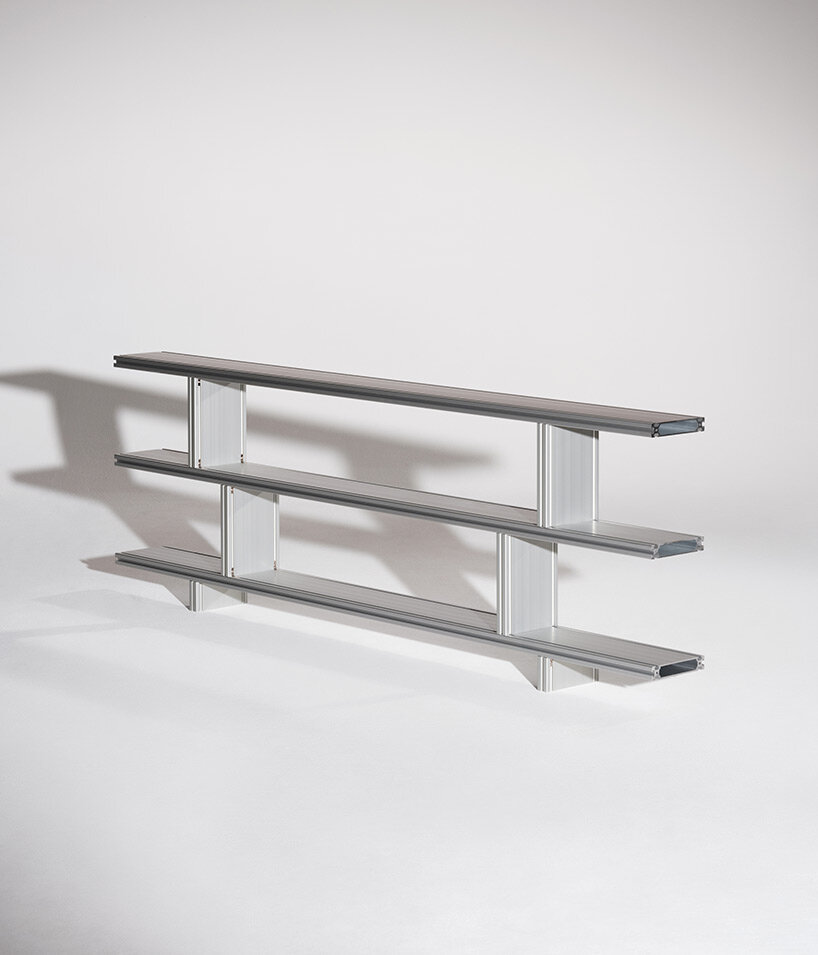
Philippe Malouin’s T-Board | image © EinarAslaksen
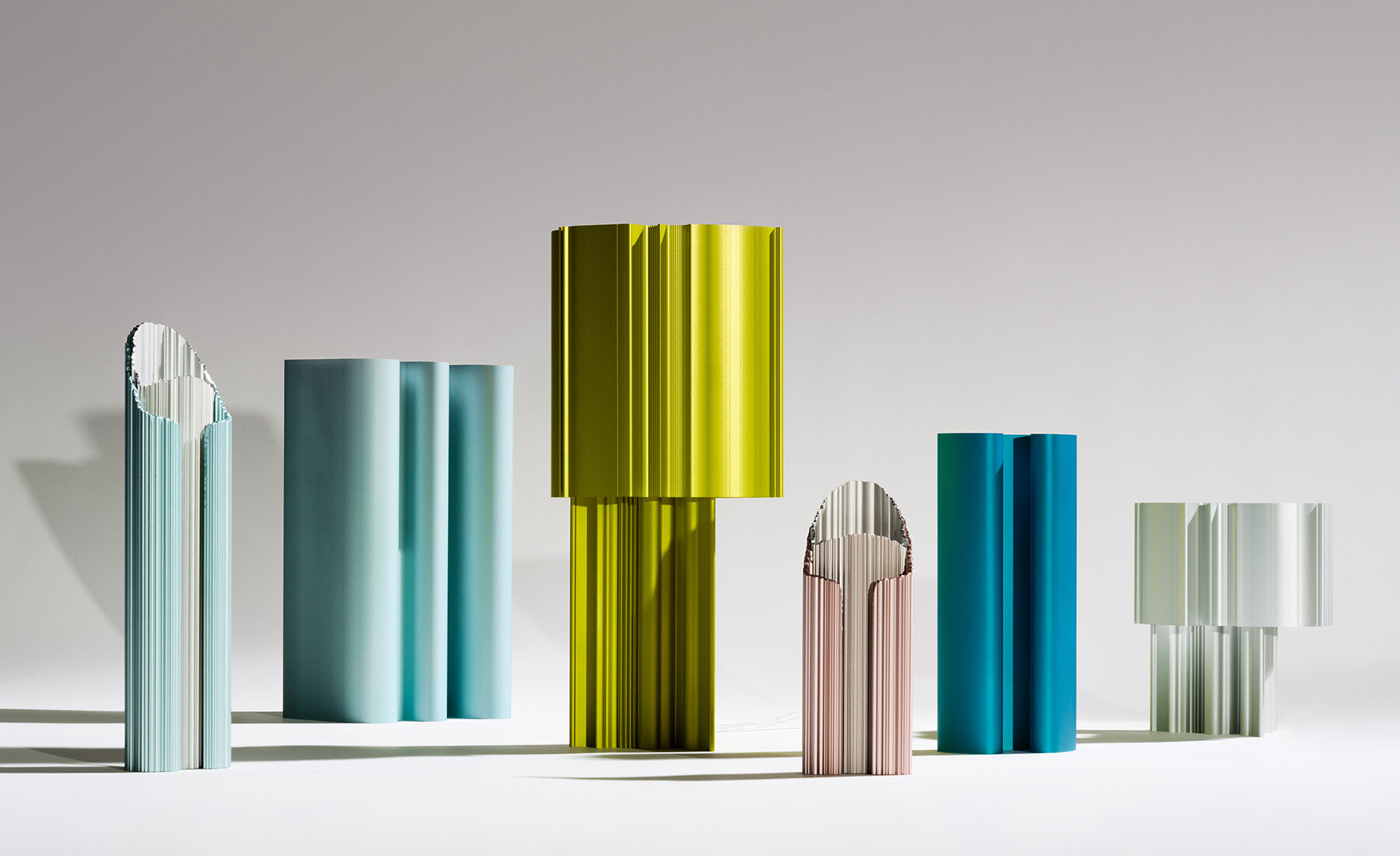
‘Exhibition 100R fills me with immense pride and joy, as it truly represents a culmination of such different approaches,’ says Lars Beller Fjetland | image © EinarAslaksen
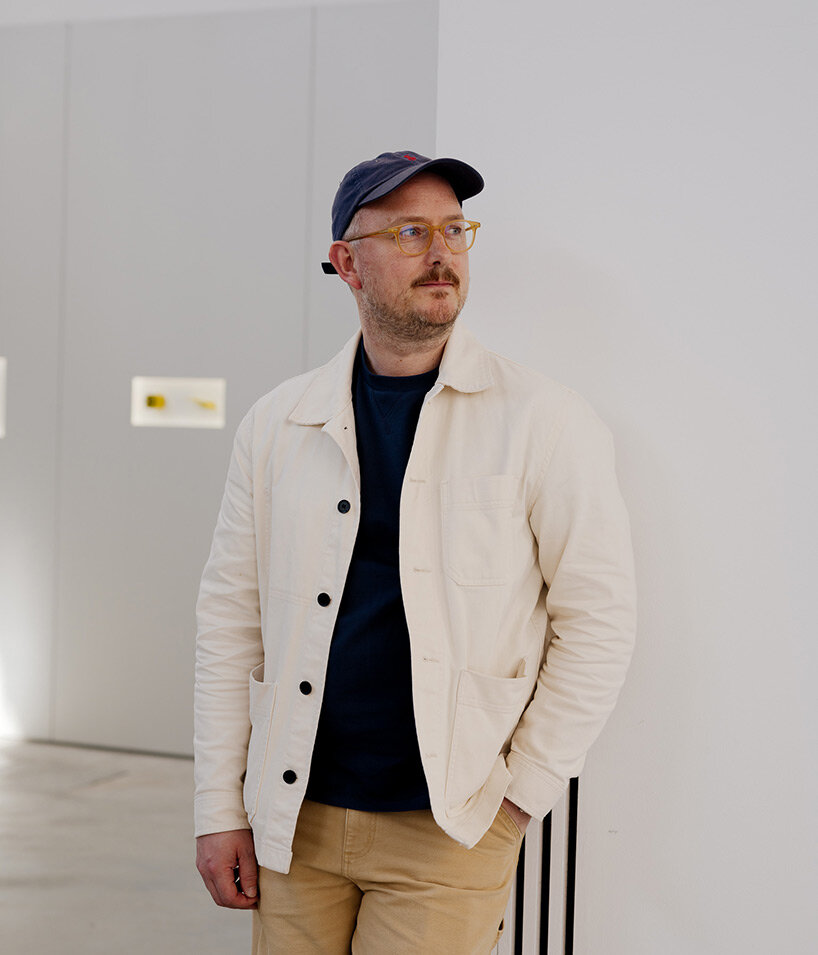
curator and art director Lars Beller Fjetland
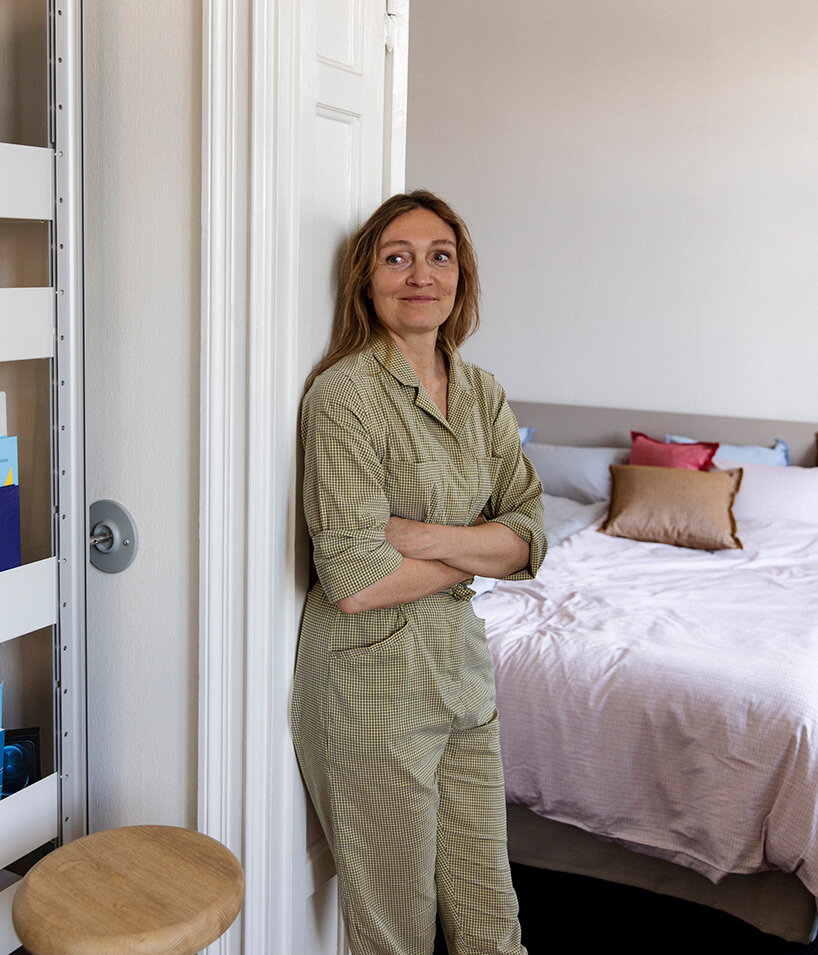
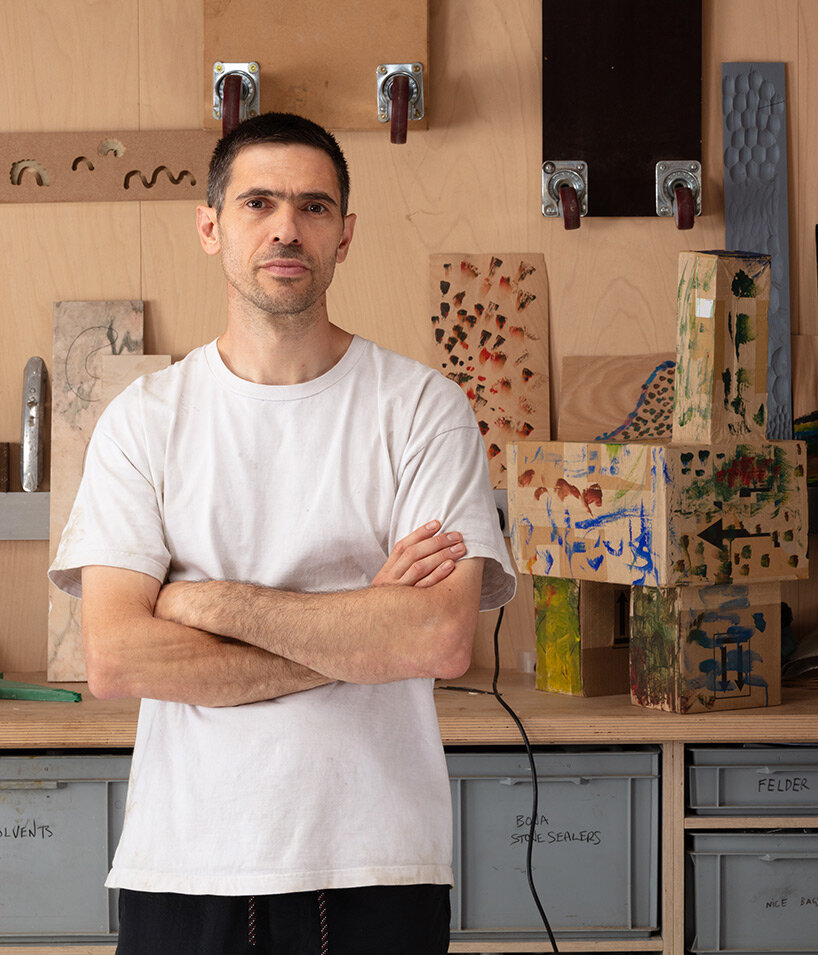
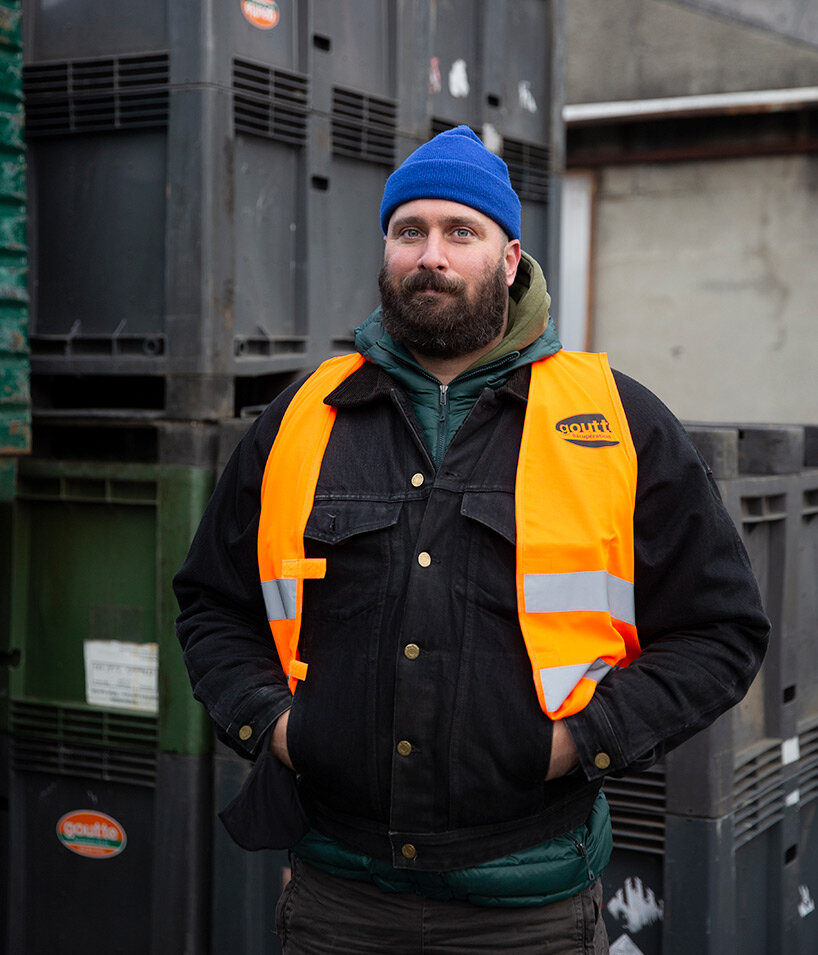
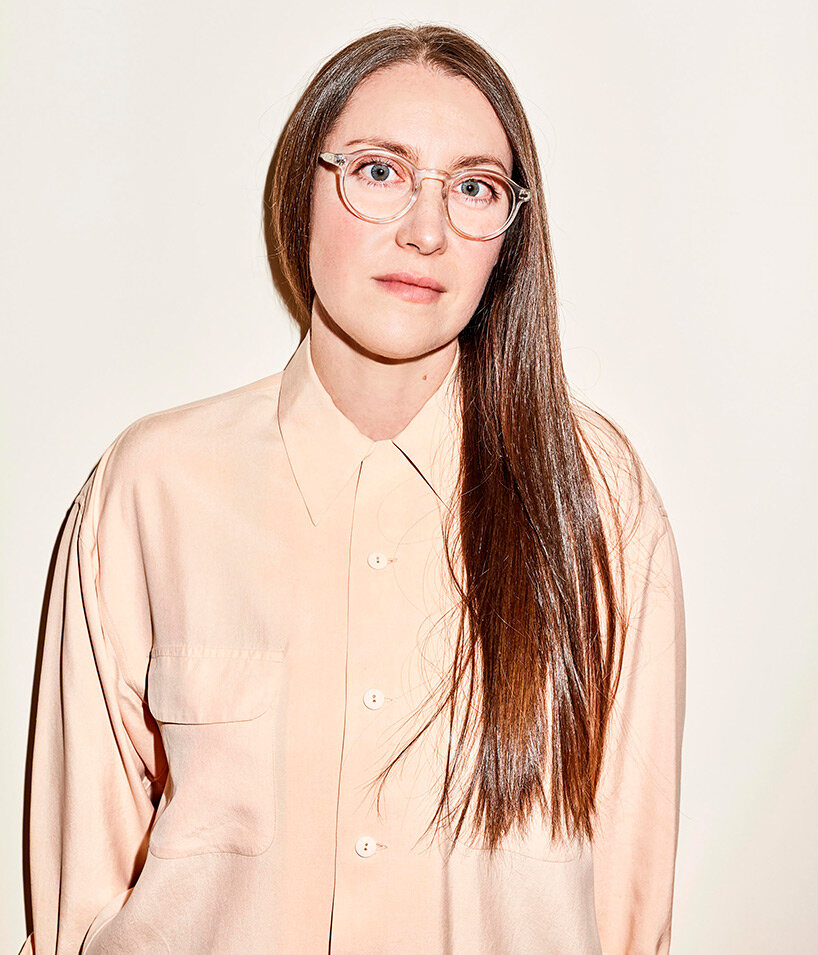
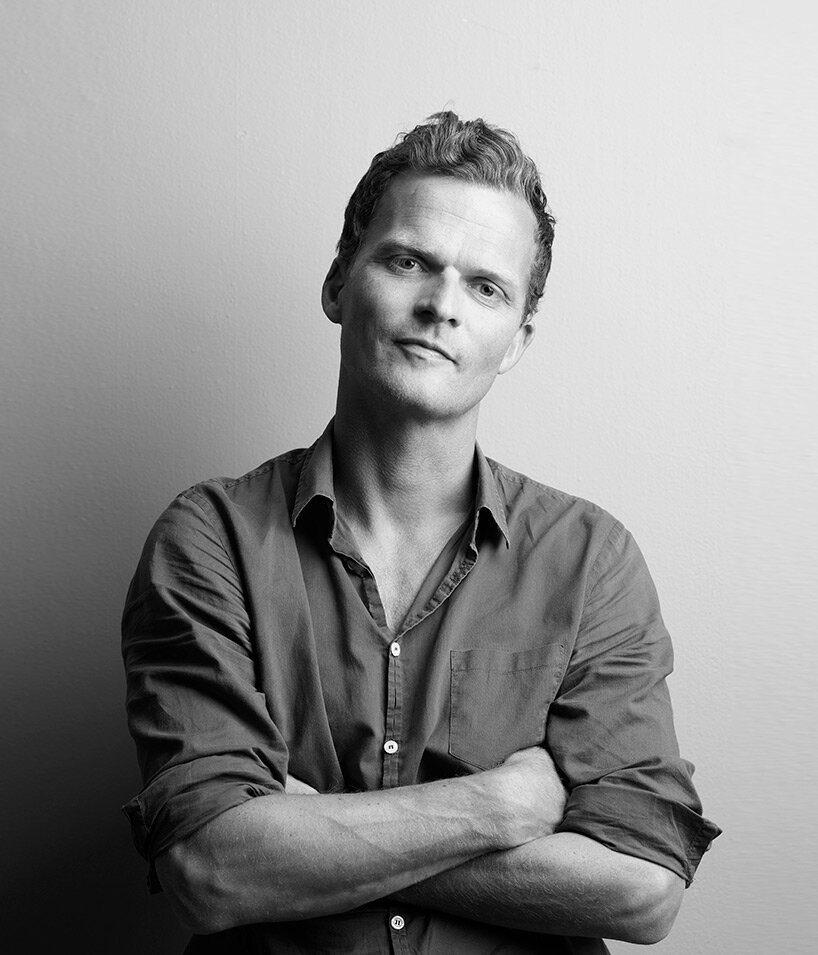
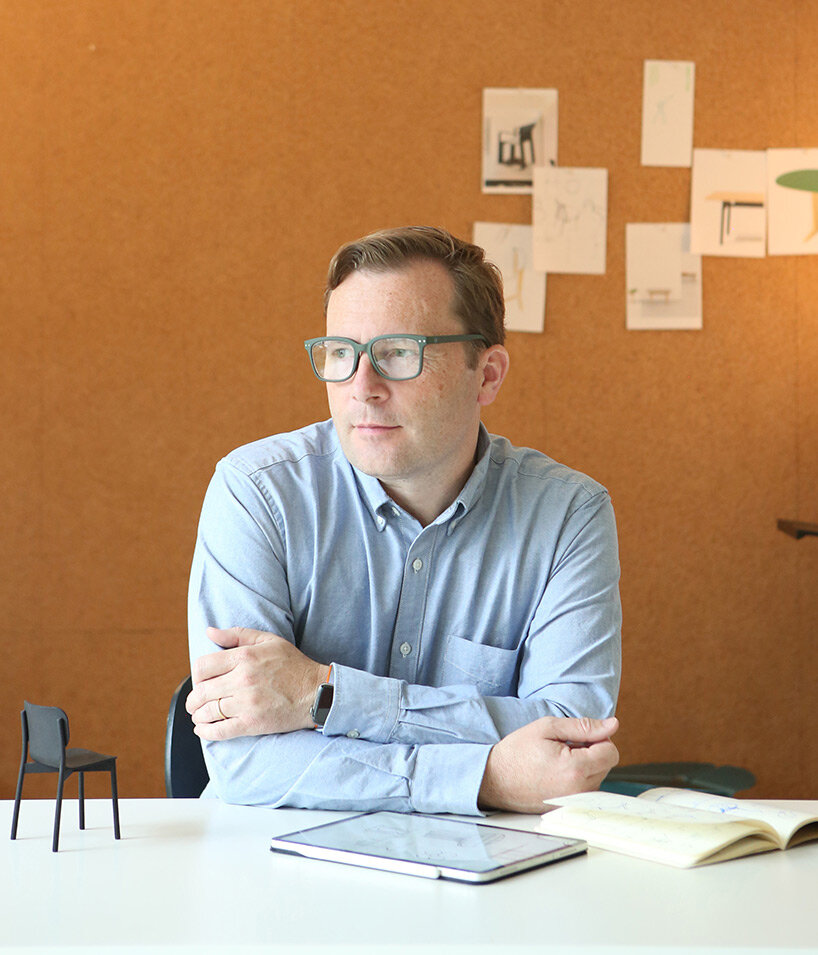
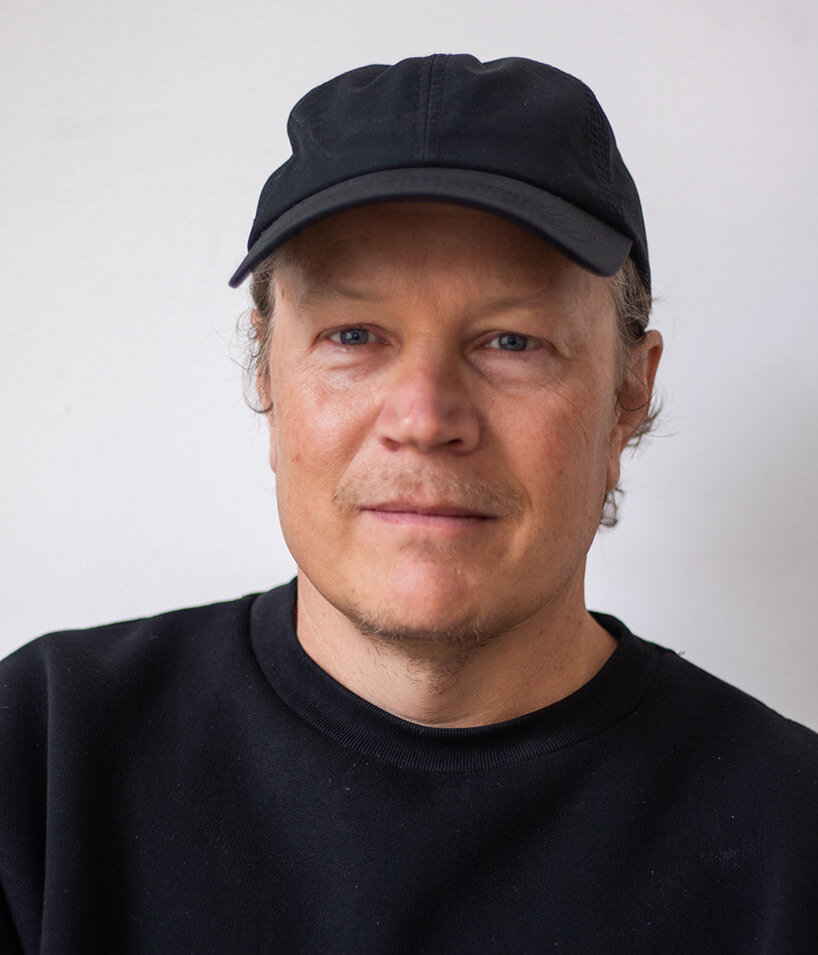
project info:
name: 100R | @shapesbyhydro
company: Hydro; ShapesbyHydro | @norskhydroasa
designers: Inga Sempé; Max Lamb; Andreas Engesvik; Shane Schneck; Rachel Griffin; John Tree; and Philippe Malouin
curator and art director: Lars Beller Fjetland | @larsbellerfjetland
products: Table lamp [Grotte] by Inga Sempé; Table lamp [Prøve Light] by Max Lamb; Coat stand [Tsuba] by Andreas Engesvik; Vessel [Nave 1, 2, & 3] by Shane Schneck; Partition [Serial] by Rachel Griffin; Chair [Billet Chair] by JohnTree; Shelving system [T-Board] by Philippe Malouin
location: Spazio Maiocchi, Milan
dates: April 16-21, 2024
